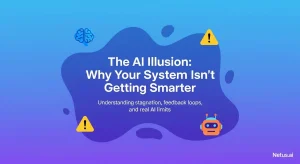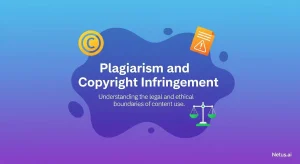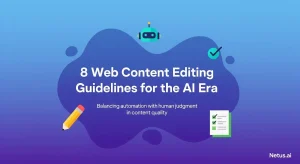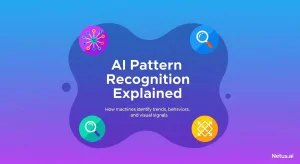Plagiarism Meaning in Tamil: Understanding the Concept and Its Consequences
Ashley Merit
Content writer and editor for Netus.AI
Table of Contents
Plagiarism Meaning in Tamil. Plagiarism is a serious issue that’s been affecting various academic and research institutions across the world. A recent example of this alarming phenomenon can be found in Tamil Nadu, where Annamalai University has come under scrutiny for producing over 200 research papers containing plagiarized content and manipulated data. Elisabeth Bik, a researcher who specializes in investigating data manipulation, unearthed these findings after a thorough three-month review and brought the issue to light. The university must address this serious violation of academic integrity, as it tarnishes their reputation and undermines the value of their research.
To combat plagiarism, it’s crucial to understand its meaning and implications. Plagiarism refers to the act of copying someone else’s work and presenting it as one’s own without proper attribution. This unethical practice can lead to severe consequences, including damage to one’s academic career and reputation. Fortunately, advanced plagiarism detection tools are available to track and identify instances of plagiarism across various languages, including Tamil. These tools can help writers and researchers detect and correct plagiarized content before submitting their papers and projects, ultimately maintaining the integrity of their work.
Key Takeaways
- Academic integrity at Annamalai University is in question due to the discovery of multiple plagiarized research papers.
- Plagiarism involves copying someone else’s work without proper attribution, which is detrimental to one’s reputation and academic career.
- Advanced plagiarism detection tools can help mitigate instances of plagiarism by identifying and correcting copied content in various languages.
The Extent of Plagiarism in Published Papers
The issue of plagiarism is particularly severe at Annamalai University, where even the vice-chancellor, who should be combating research misconduct, is involved in fraudulent research publication. This case highlights vulnerabilities in academic research, as 200 plagiarized papers show not just copied text, but also extensive image manipulation. Identifying patterns in image duplication is a more challenging task compared to detecting text similarities.
These plagiarized papers exhibit gross scientific errors and repetitive patterns. In some instances, research scholars have published studies with implausible conclusions, resulting in superficial research and data duplication. The motivation behind these malpractices is often to increase the number of published articles, regardless of quality or originality.
While unintentional mistakes can lead to plagiarism, using it as an excuse for subpar research is inexcusable. Various journals charge fees for publishing scientific papers, but they often fail to effectively screen the submitted research for plagiarism or credibility. This lack of thorough review allows fraudulent research to slip through the cracks, impacting both the specific field of study and the wider academic community. To uphold the integrity of research, it is essential for universities, researchers, and journals to address the issue of plagiarism and implement stricter regulations and practices.
The Utility of Anti-Plagiarism Software
In recent times, plagiarism has become a significant concern in the academic world. To tackle this issue, institutions like the University Grants Commission have introduced measures such as qualitative examinations of Ph.D. theses.
Strict penalties for publishing plagiarized papers were lacking, but advanced technology has brought forth sophisticated anti-plagiarism software. These tools use artificial intelligence to detect various forms of data and image manipulation across different languages. Some key features of these software include:
- Plagiarism checkers: A primary component that allows users to compare text and analyze academic papers for duplicate content.
- Free versions: Many anti-plagiarism tools offer a limited free version for individuals to perform basic checks.
- Algorithm: The underlying programming that identifies the similarities between different texts.
Checking for plagiarism is crucial as it affects a researcher’s career. Publishing plagiarized content is not only unethical but can also lead to legal issues if the content is stolen from a copyrighted source. Consequently, a research scholar may face legal penalties for intentional copyright infringement.
Emphasizing the importance of anti-plagiarism software helps maintain the integrity of academic research and assists individuals in ensuring their work is original and plagiarism-free.
Proven Cases of Plagiarism in Papers Raise Questions About the Integrity of the Researcher
Accusations of plagiarism often tarnish a researcher’s reputation and shake the foundation of academic integrity. People charged with plagiarism face consequences like fraud accusations, potential legal disputes, and even national media attention. Some of the worst offenders resort to deceptive tactics, such as manipulating plagiarism reports with special characters and concealing copied copyrighted work. To maintain ethical standards and responsibility, advanced software tools can efficiently catch these dangerous practices where traditional checkers might fail.
How to Avoid Plagiarism?
When working on a research paper, it is crucial to ensure that your content is free of plagiarism, whether intentional or unintentional. To avoid plagiarism effectively, consider the following strategies:
- Use a plagiarism detector: Employ reliable plagiarism detection software to scan your paper for duplicate content. These applications often use artificial intelligence to identify plagiarism in academic works. A plagiarism report is generated, allowing you to rectify any unintentional instances.
- Choose the right checker: Make sure to select an efficient plagiarism checker and examine its features. Opt for advanced tools with sophisticated capabilities.
- Learn how to use the checker: Uploading a document to a plagiarism checking site is typically straightforward. Simply upload the file for scanning, allowing the software to determine if any portions have been copied. Some applications can even be installed on mobile devices for added convenience.
- Originality: Emphasize the importance of expressing your own thoughts and ideas in your writing. While referencing other works is essential, ensure you properly attribute credit to the original sources.
By employing these techniques and maintaining a responsible approach to writing, students can effectively avoid issues related to plagiarism, intellectual property theft, and the ethical concerns surrounding the copying of other authors’ work.
Assistance Offered by Copyleaks Software
Copyleaks presents a cutting-edge software solution capable of detecting plagiarism across various languages. Using this application involves several straightforward steps:
- Register for Copyleaks’ plagiarism scanning service via their website.
- Utilize the provided API Key to sign in.
- Initiate document comparison within the Copyleaks platform.
- The software supports document comparison in multiple languages.
- Scanning is completed rapidly, with results clearly indicated.
- Final output is formatted to be easily editable.
The efficiency of the Copyleaks checker makes document verification a breeze. While numerous free plagiarism checkers are available online, identifying the ideal tool is crucial. Seek a plagiarism checker equipped with a sophisticated algorithm designed to uncover duplicated content and data manipulation.
Frequently Asked Questions
Defining Plagiarism in the Tamil Academic Setting
Plagiarism, within the Tamil academia, is defined similarly to other academic settings. It involves copying someone else’s work, ideas, or intellectual property without giving proper credit, leading to a misrepresentation of the originality of one’s work. The act of plagiarism can range from directly copying text to paraphrasing someone else’s ideas without acknowledging the source in the Tamil context.
Recognizing Self-Plagiarism in Tamil Academia
Self-plagiarism occurs when an author reuses their previously published work without proper citation or acknowledgment. This practice is discouraged in Tamil academia and can lead to the same consequences as plagiarizing someone else’s work.
Tools to Detect Plagiarism in Tamil Writings
There are multiple tools available for checking plagiarism in Tamil writings. Some of these tools may include language-specific services, while others may involve using popular plagiarism checking services such as Turnitin and adjusting the settings to cater specifically to the Tamil language.
Turnitin and Plagiarism Detection in Tamil
Turnitin is a widely-used service for detecting plagiarism in academic works and can be applied to writings in various languages, including Tamil. It functions by comparing a submitted document to its vast database of published work to identify any matches or instances of plagiarism in Tamil texts.
Examples of Plagiarism in Scholarly Works
Some examples of plagiarism in scholarly works may include:
- Direct copying of text from a source without citation
- Paraphrasing someone else’s ideas or work without acknowledging the original author
- Reusing one’s previously published work without proper citation (self-plagiarism)
- Falsely claiming someone else’s work as one’s own
Common Synonyms for Plagiarism
Some common synonyms for the act of plagiarism include:
- Copying
- Academic dishonesty
- Intellectual theft
- Paraphrasing without credit

The shortcomings of content generated by AI | NetusAI
Discover why fast, high-volume AI content often fails to deliver real results. Learn about the crucial missing feedback loop and how implementing performance tracking can transform your AI content strategy.

The illusion of AI: Your system's intelligence gap | NetusAI
Stop wasting marketing spend! Most AI tools don’t learn from results, causing content stagnation and low engagement. Discover why your generative AI isn’t getting smarter and what system actually learns and optimizes content.

Plagiarism and copyright infringement | NetusAI
Learn the distinct differences between plagiarism and copyright infringement. Understand the ethical and legal implications and get practical strategies for avoiding both academic and creative work with NetusAI.

Tips and strategies for mobile content marketing | NetusAI
Optimized for mobile-first indexing, learn 5 essential strategies to capture attention, enhance engagement and drive leads and sales with your mobile content marketing.

Web content editing guidelines for the AI era | NetusAI
Review web content editing guidelines for the AI era. Learn how to edit AI-generated content, ensure authenticity and optimize for SEO and readability.

Explaining AI pattern recognition | NetusAI
AI pattern recognition enables machines to identify trends for diverse applications, from detecting plagiarism to fraud. Discover its processes, models and real-world benefits.
